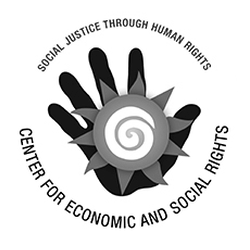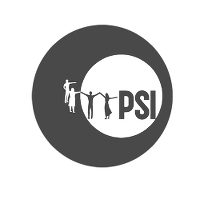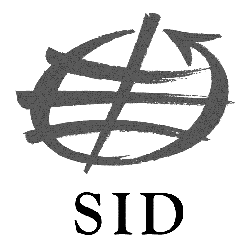By Roberto Bissio, Social Watch
With contradictory arguments, the World Bank defines a very low threshold that would make poverty eradication possible with relatively little effort and at the same time argues that it is necessary to “move from millions to trillions”. Accordingly, it has taken a “cascade approach” to investment decision-making to encourage partnerships with the private sector. The winners are the big financial intermediaries, who leverage these partnerships, while the poor might end up paying additional fees for essential services.
The two messages most frequently taken away from the 2030 Agenda and its SDGs are that poverty is the first priority, as summarized in the “leave no one behind” slogan, and that governments alone cannot meet the agreed goals and therefore ‘partnerships’ with the corporate sector are needed.
"Without the private sector, it is not going to happen, as we have budgetary constraints in every country," explained Angel Gurría, Secretary-General of the Organisation for Economic Cooperation and Development (OECD) in an interview with Reuters. [fn]Goldsmith (2015).[/fn]
This sounds intuitively right for many people in post-industrialized developed countries that perceive a lot of people living in poverty ‘out there’, perhaps even threatening to ‘get in’ to their countries and thus making the protection of walls and other barriers necessary. At the same time, they are told that the protracted economic slowdown since the 2008 financial debacle requires budget austerity measures, making it impossible to increase what they perceive as overseas ‘charity’.
Political discourses along those lines have emerged from the margins to the centre in too many countries, but what if the math doesn't add up and the premises are not true? The World Bank currently sets the international poverty line at the local buying power equivalent of US$ 1.90 a day, or some US$ 700 a year. There are 700 million people living under that line, that is, roughly 10 percent of the world population, currently estimated at 7 billion. World Bank estimates the world's average per capita income to be US$ 10,000 in 2015. That figure is 14 times greater than the poverty line, which means that the problem is one of inequalities, not of scarcity. Measuring wealth and not income, Oxfam concluded that eight individuals own as much as does half of humanity. [fn]www.oxfam.org/en/pressroom/pressreleases/2017-01-16/just-8-men-own-same-wealth-half-world. [/fn]
Brookings Institution economists Christine Zhang, Laurence Chandy and Lorenz Noe played further with the numbers. [fn]Zhang et al. (2016).[/fn] They found that since people living under the international poverty line still earn something (a mean estimated at US$ 1.34 in 2012), the poverty gap, that is the total amount of money required to lift everybody up above the poverty line, is less than US$ 80 billion. Later estimates put the gap at US$ 66 billion in 2017.
This is a lot of money, and yet it is much less than the recent US$ 100 billion arms deal agreed between the US and Saudi Arabia and also less than the money contributed as official development assistance (ODA) by the members of the OECD Gurría heads (US$ 142.6 billion in 2016). [fn]www.oecd.org/dac/development-aid-rises-again-in-2016-but-flows-to-poorest-countries-dip.htm. [/fn] In other words, with half of the money already available for that very purpose, extreme poverty would disappear today, if only that money was transferred friction free to those that need it.
This reductio ad absurdum proposition is based on two premises, one true, the other false. It is true that money can be transferred (almost) friction free to the poor. It is false that this would eradicate poverty.
Cash transfers and financial inclusion
In March 2017 India announced that 99 percent of its population had been enrolled in Aadhaar, a biometric ID system. That means that over 250 million Indians living under the international poverty line already have a unique identification number and a card that can easily become a banking card. The infrastructure still needs to be improved, but what remains to be done to allow every person living in poverty in India to withdraw cash from an ATM or otherwise receive money in her or his electronic wallet is minimal compared with the magnitude of what has already been done in the world's largest ID system. And the people living in extreme poverty in India comprise one third of the world’s total.
The World Bank has been promoting cash transfer systems worldwide as the preferred anti-poverty instrument. As some sort of ID system is essential for targeting beneficiaries (and other kinds of controls), progress in biometric identification is also happening quickly around the world. Financial inclusion strategies are bringing together UN agencies, the World Bank, national and international banks and mobile phone service providers in many countries to enroll people at an accelerated pace. Sierra Leone, one of the poorest countries in the world, is expected to move from 13 percent to 87 percent of its population having a bank account by 2020. During the Ebola epidemic in 2014, some 30,000 health workers were paid through electronic transfers. [fn]www.sl.undp.org/content/sierraleone/en/home/presscenter/pressreleases/2016/12/16/financial-inclusio…. [/fn]
Cash transfers are possible and even effective for humanitarian purposes. They are 25-30 percent cheaper than in-kind aid (so more food per dollar) and more respectful, as people don’t all want the same thing and cash respects their right to make decisions about their lives. According Owen Barder, from the Center for Global Development, the transfers stimulate the local economy, with a positive spill-over effect for the whole country, and ease social tensions locally. The beneficiaries, often members of a different ethnic group or country (refugees) are not seen as a burden but an advantage for local trade and industry. [fn]Presented in a power point available at www.dropbox.com/s/vdgsej5dr610fsd/2017-02-24%20LSE%20Humanitarian%20Cash%20Transfers.pdf?dl=0. [/fn]
One of the means of implementation targets under SDG 10, to reduce inequalities within and between countries, is target 10.c, which calls for the reduction of transaction costs of migrant remittances by 2030 to less than 3 percent and elimination of remittance corridors with costs higher than 5 percent. Even allowing for a 10 percent cost in transferring money to the extreme poor, the total cost of the operation is well within existing means. But the World Bank, while producing all these figures has also been arguing (together with the IMF and the regional development banks) since 2015 that “to meet the investment needs of the Sustainable Development Goals, the global community needs to move the discussion from “billions to trillions”- that is from billions in ODA financing to trillions in investments of all kinds: public and private, national and global, in both capital and capacity. [fn]World Bank et al. (2015).[/fn]
At a time when too many decision-makers among the Bank's main shareholders question the need for multilateral cooperation, this shift can be dangerously delegitimizing. After having originally been created to finance the reconstruction of Europe after World War II, the World Bank redefined itself as THE anti-poverty institution, conceptualizing what it labelled ‘extreme poverty’ in strictly monetary terms and defining this poverty line at a very low level.
A rights-based approach
Poverty is not just about money (or lack of it). The World Bank itself concluded, already in 2009, that “even the best-designed CCT [Conditional Cash Transfer] programme cannot meet all the needs of a social protection system. It is, after all, only one branch of a larger tree that includes workfare, employment and social pension programmes.” [fn]Fiszbein (2017).[/fn] Yet the World Bank has rejected some key recommendations from global poverty experts on the Commission on Global Poverty to introduce non-monetary measures (see Box) and is not willing either to have its estimates audited by a body “fully external to the World Bank”, despite the fact that doing so would make its poverty line more respected. [fn]Commission on Global Poverty (2017).[/fn] “The word 'audit' carries connotations of formal authority that we believe would be neither appropriate to a collaborative exercise, nor compatible with the intellectual independence of our own researchers” the Bank replied to the Commission on Global Poverty report. [fn]World Bank (2016).[/fn]
Meanwhile, civil society and the UN High Commissioner on Human Rights have been arguing that poverty should be understood as a symptom and a result of the violation of human rights. [fn]“Poverty is not only deprivation of economic or material resources but a violation of human dignity too. (...) Poverty erodes or nullifies economic and social rights such as the right to health, adequate housing, food and safe water, and the right to education. The same is true of civil and political rights, such as the right to a fair trial, political participation and security of the person”. See: www.ohchr.org/EN/Issues/Poverty/DimensionOfPoverty/Pages/Index.aspx. [/fn] The 2030 Agenda does not explicitly say that, but it addresses “poverty in all its dimensions” (target 1.2) and calls on States to ensure people have “equal rights to economic resources, as well as access to basic services” (target 1.4). This is much closer to the approach of Nobel prize- winner Amartya Sen who sees poverty as deprivation of choices available for individuals to live the lives they have reason to value and also the deprivation of the individual’s abilities to exercise that choice.
From that perspective, it doesn't make much difference if a person crosses the poverty line and earns US$ 1.95 a day instead of US$ 1.85, but being respected within a community does. The International Labour Organization (ILO) is starting its own exercise in defining non-monetary indicators of poverty. In addressing the question of what are the “nationally appropriate social protection systems” requested by target 1.3, the ILO defines a universal social protection floor as including: [fn]http://workspace.unpan.org/sites/Internet/Documents/Social%20Protection%20Ortiz%20Dec%202016.ppt.pdf. [/fn]
- a universal child benefit of 20 percent of a country’s national poverty line to all children 0-14 years old;
- a benefit of 100 percent of a country’s national poverty line to all orphans;
- a universal pension of 100 percent of a country’s national poverty line, excluding those that have contributory pensions;
- unemployment support of 100 percent of a country’s poverty line to one person per vulnerable household for a period of 100 days;
- a benefit of 100 percent of a country’s national poverty line to all persons with severe disabilities; and
- a maternity benefit for four months of 100 percent of a country’s national poverty line to all mothers with newborns.
In this way, country decisions are respected, since it is up to each country to define national poverty lines according to its circumstances, but from then on the benefits (and the progress or regression) can be compared across countries.
Adding administrative costs, the provision of such floors would cost from as little as 1 percent of GDP in Thailand, Brazil and Namibia, less than 3 percent of GDP in Egypt, South Africa, India and Morocco and between 7 and 8 percent of GDP in Uganda, Cambodia, Ghana, Benin, Nepal and Mali. [fn]Ibid.[/fn] Is universal social protection affordable in developing countries? “YES” is the categorical answer by Isabel Ortiz, director of social protection at the ILO, who compiled these estimates.
The eradication of extreme poverty was the priority in the Millennium Development Goals and is still the first goal in the 2030 Agenda. It is further mandated by the Lisbon Treaty in Europe. [fn]Article 208 of the Lisbon Treaty (2007) states: “[European] Union development cooperation policy shall have as its primary objective the reduction and, in the long term, the eradication of poverty.”[/fn] Since everybody agrees that better than giving fish to the hungry is teaching them how to fish, the best use of ODA is not to transfer it to the poor directly, but to use those monies to strengthen national mechanisms to mobilize domestic resources and allow countries to fund their social protection floors themselves. Developing country governments need to be able to raise taxes and control illicit outflows so that they can provide the cash, the basic services and the social protection that will raise their people out of poverty and in a sustainable way.
But this is not the perspective that the World Bank defends. The Bank's “Paying Taxes 2017” report advocates not only administrative efficiency, but also lower tax rates. [fn]PricewaterhouseCoopers/World Bank Group (2017).[/fn] Any country that reduces tax rates, raises the threshold for taxable income, or provides tax exemptions, gets approval. Development specialists Jomo Kwame Sundaram and Anis Chowdhury comment that “the report particularly commends countries that lower corporate tax rates (or increase threshold and exemptions) and negatively considers those that introduce new taxes, essentially encouraging tax competition among developing countries”. [fn]www.ipsnews.net/2017/04/world-bank-must-stop-encouraging-harmful-tax-competition/. [/fn] The influential World Bank report is co-authored with Pricewaterhouse Coopers (PwC), one of the ‘Big Four’ international accounting and consultancy firms. PwC competes with KPMG, Ernst & Young and Deloitte for the lucrative business of helping clients minimize their tax liabilities. PwC assisted its clients in obtaining at least 548 tax rulings in Luxembourg between 2002 and 2010, enabling them to avoid corporate income tax in other jurisdictions. [fn]Ibid.[/fn]
Further, the OECD member countries that hold a large majority of the weighted votes at the World Bank have so far vetoed proposals to set up an inclusive UN intergovernmental global tax body that civil society organizations as well as many developing countries are demanding.
De-risking private investment
Instead of sending funds to people in poverty or helping the countries where they live to raise taxes, avoid illicit outflows and thus fund their own social protection systems, the World Bank is increasingly using its money to ‘leverage private investment’, offering financial guarantees to big international corporations, mainly for infrastructure projects. In April 2017, speaking to the World Bank and IMF ministerial meeting, US Treasury Secretary Steven T. Mnuchin applauded “the World Bank’s emphasis on the private sector as the engine of growth and the launch of a bold strategy intended to unleash private investment in the world’s poorest countries” while warning that “we need to be extremely judicious in the use of public resources [...] when it comes to financing state-owned enterprises”. [fn]Statement by Secretary Steven T. Mnuchin to the 95th Meeting of the Development Committee, April 22, 2017, Washington, D.C. (http://documents.worldbank.org/curated/en/665751493149273463/pdf/DCS2017-0022-UnitedStates-04222017…). [/fn]
According to that logic, using public money to support private businesses is ok, but not so to support public policies. Mnuchin recognized that “private sector development that actually boosts growth and improves livelihoods in the world’s poorest nations is a difficult task,” but this is nevertheless the path he directs countries to follow.
While avoiding references to climate change as one of the objectives, to please the new US administration, the World Bank president announced after the 2017 Spring meeting a “cascade” of investment using this funding modality to “help create markets and leverage more private financing”. [fn]Alexander, Nancy, “Beware the Cascade”, blog entry available at http://justgovernance.boellblog.org/2017/05/23/beware-the-cascade-world-banck-to-the-future/. [/fn] This is the same ‘innovative approach’ to financing development that led the Bank to ‘reduce the risks’ of Odebrecht, the Brazilian construction company that undermined the democratization process of Brazil and other Latin American countries through a sophisticated continent-wide corruption system with World Bank guarantees for over US$ 40 billion in investments (see Box in Chapter 17). [fn]World Bank database of PPPs http://ppi.worldbank.org/snapshots/sponsor/odebrecht-sa-1503. [/fn]
World Bank president Jim Yong Kim now argues that “there's trillions of dollars sitting on the sidelines earning little interest or even negative interest and investors are looking for better returns”. [fn]World Bank Group Opening Press Conference by President Jim Yong Kim at the 2017 WBG/IMF Spring Meetings, Transcript available at www.worldbank.org/en/news/speech/2017/04/20/2017-wbgimf-spring-meetings-world-bank-group-opening-pr…. [/fn] The Bank’s policy will thus be to “work with our partners to de-risk project[s] or, if needed, de-risk entire countries or sectors”. [fn]Ibid.[/fn] That means using public money as a guarantee for corporate investment. If the project fails, the public in developed and developing countries will pay (or get into debt). If it succeeds, the profits go to the corporations.
Jürgen Kaiser, policy coordinator of the German organization erlassjahr.de (Jubilee) commented in a UN ministerial roundtable on financing for development in May 2017 that “the infrastructure needs of developing countries were there five years ago or ten years ago. This push is actually motivated by the needs of investment funds (including pension funds) in developed countries that face very low or even negative interest rates at home.”
In a speech at the London School of Economics in April 2017, World Bank president Jim Yong Kim said that “One of the things we’d like to do, for example, is to find a way for a pension fund in the United Kingdom to be able to invest in building roads in Dar es Salaam, get a reasonable return on that investment, and do a lot of good in the process.” [fn]Speech by World Bank Group President Jim Yong Kim: Rethinking Development Finance, 11 April 2017. Available at: http://www.worldbank.org/en/news/speech/2017/04/11/speech-by-world-bank-group-president-jim-yong-ki…. [/fn]
“In a nutshell, this is what financialization means,” comments Nancy Alexander, who directs the economic governance programme at the Heinrich Böll Stiftung North America, “a wave of long-term revenues from taxpayers and user fees in the global south”. Some say this is a "win-win" and Africans will win too, but the standard PPP contracts put the heaviest risks on the public sector and bind the hands of the state to regulate in the public interest. Construction companies and financial intermediaries are the real winners.
Conclusion
Just as illusionists use one hand to distract the audience’s attention from what the other is doing, the anti-poverty efforts by the World Bank and IFIs are not focused on reducing inequalities but concentrate on a relatively modest objective set by a very low poverty line. At the same time the SDGs, including SDG 1, are deemed so ambitious that billionaires and corporations are invited to ‘partner’ in the effort, because where else will the money come from if not from those that have it? Finally, since investors cannot be attracted unless their profits are guaranteed, the taxpayers' money instead of going to the poor or to policies that directly benefit them is used to reduce the risks of foreign investors and bail out their wrong investments, decisions often stimulated by corruption, while people in the poorest countries are expected to pay for essential services and for the profits of the investors.
As the lyrics of Hood Robbin' from famous rapper Ice Cube put it, “Ain't that a bitch, when you got to steal from the poor, and give to the rich?”
Roberto Bissio is Executive Director of the Instituto del Tercer Mundo (Third World Institute) and coordinator of the Social Watch network.
Commission on Global Poverty (2017): Monitoring Global Poverty. Washington, D.C.: World Bank.
Fiszbein, Ariel/Schady, Norbert (2009): Conditional Cash Transfers Reducing Present and Future Poverty. Washington, D.C.: World Bank.
http://siteresources.worldbank.org/INTCCT/Resources/5757608-1234228266004/PRR-CCT_web_noembargo.pdf
Goldsmith, Belinda (2015): Who funds the trillion dollar plan of the U.N.'s new global goals? Reuters, 26 September 2015.
www.reuters.com/article/development-goals-finance-idUSL5N11V3PB20150926
PricewaterhouseCoopers/World Bank Group (2017): Paying Taxes 2017. Washington, D.C.
http://www.pwc.com/payingtaxes
US Treasury (2017): Statement by Secretary Steven T. Mnuchin to the 95th Meeting of the Development Committee, April 22, 2017, Washington, D.C.
http://documents.worldbank.org/curated/en/665751493149273463/pdf/DCS2017-0022-UnitedStates-04222017.pdf
World Bank (2016): Monitoring Global Poverty - A Cover Note to the Report of the Commission on Global Poverty, chaired by Prof. Sir Anthony B. Atkinson, 18 October 2016. Washington, D.C.
http://pubdocs.worldbank.org/en/733161476724983858/MonitoringGlobalPovertyCoverNote.pdf
World Bank et al. (2015): From Billions to Trillions: Transforming Development Finance. Washington, D.C.
http://siteresources.worldbank.org/DEVCOMMINT/Documentation/23659446/DC2015-0002(E)FinancingforDevelopment.pdf
Zhang, Christine/Chandy, Laurence/Noe, Lorenz (2016): The global poverty gap is falling. Billionaires could help close it. Washington, D.C.: Brookings.
www.brookings.edu/blog/up-front/2016/01/20/the-global-poverty-gap-is-falling-billionaires-could-help-close-it/








